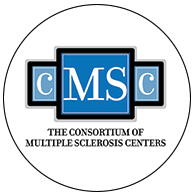No differences in relapse or progression rates between switchers & stayers over 6 months
Multiple sclerosis patients who are well controlled on injectable drugs but switch to oral therapies aren’t at greater risk of early relapse, researchers found.
In a case-control study from the MSBase longitudinal cohort, there were no differences in the rate of first relapse or disability progression over the first 6 months, Steve Vucic, PhD, of Westmead Hospital in New South Wales in Australia, and colleagues reported online in the European Journal of Neurology.
“The present findings suggest that disease remains quiescent over both the immediate post-switching period and the longer-term treatment horizon, at least in this population of previously stable patients,” they wrote, adding that theirs is the first study to assess the real-world risk of early relapse in MS patients who were previously stable on injectable therapy.
It’s common for MS patients on disease-modifying therapy to switch treatments, though it’s usually triggered by breakthrough disease. If patients are stable on injectables, other reasons for switching include poor tolerability or the ease of administration of the newer oral drugs such as fingolimod (Gilenya), dimethyl fumarate (Tecfidera), and teriflunomide (Aubagio).
Recent concerns about disease reactivation in patients switching to fingolimod have highlighted the paucity of data on clinical outcomes shortly after switching to oral agents, especially in patients who have been stable but are looking to switch for reasons other than breakthrough disease, Vucic and colleagues wrote. Thus far, the evidence has been limited to patients with active disease who switch to orals.
To help answer the question about early outcomes following a switch to orals in patients stable on injectables, the researchers matched 396 patients who’d switched with the same number of patients who remained on interferon and glatiramer acetate (Copaxone).
Among those who switched, about 71% moved to fingolimod, 16% to dimethyl fumarate, and 3% to teriflunomide, and the median time to switching after completely stopping injectables was 14 days.
Among the 217 switchers who reported a reason for doing so, the most common was lack of tolerance (31%) and convenience (30%).
Of all participants, about 7% had a relapse over the 6-month period.
Overall, Vucic and colleagues saw no difference between groups in the proportion of patients who had at least one relapse within the first 6 months (switchers 7.3%, stayers 6.6%, P=0.675).
The mean annualized relapse rate was comparable between groups (0.2 for both), and there was no difference in the rate of first relapse (HR 1.22, 95% CI 0.70 to 2.11), they reported.
Nor was there any significant difference in the rate of disability progression by treatment arm (switchers 2.3%, stayers 1%; HR 1.43, 95% CI 0.63 to 3.26).
Finally, sensitivity analyses didn’t turn up any between-group differences in rate of first relapse or disability progression, they added.
In a subgroup analysis, there was no difference among the switchers in the rate of 6-month relapse between the three oral agents.
Although Vucic and colleagues concluded that there was no evidence of disease reactivation within the first 6 months for patients stable on injectables but switching to oral therapy — but there are still several considerations when switching stable injectable patients to new oral drugs. These include the side effect profile of oral agents — which could comprise bradycardia, gastrointestinal symptoms, flushing, and hair thinning — and rarer complications such as risk of progressive multifocal leukoencephalopathy (PML).
“Whatever the treatment decision, close monitoring of patients switching to oral agents is suggested given that long-term safety profiles are less well established relative to the platform injectables,” they wrote.
The study was limited by the potential for unmeasured confounders, and by the lack of patient-reported outcome data which “may provide important insights into a patient’s real-world experience following switch to oral therapy, particularly in the light of the tolerance and convenience discontinuation triggers observed,” they researchers said.
They called for further studies assessing the factors underlying the increase in longer-term disease activity in order to develop more appropriate management algorithms.
The researchers disclosed financial relationships with Biogen, Novartis, Bayer, Merck Serono, Genzyme, Sanofi, Teva, and Roche.










